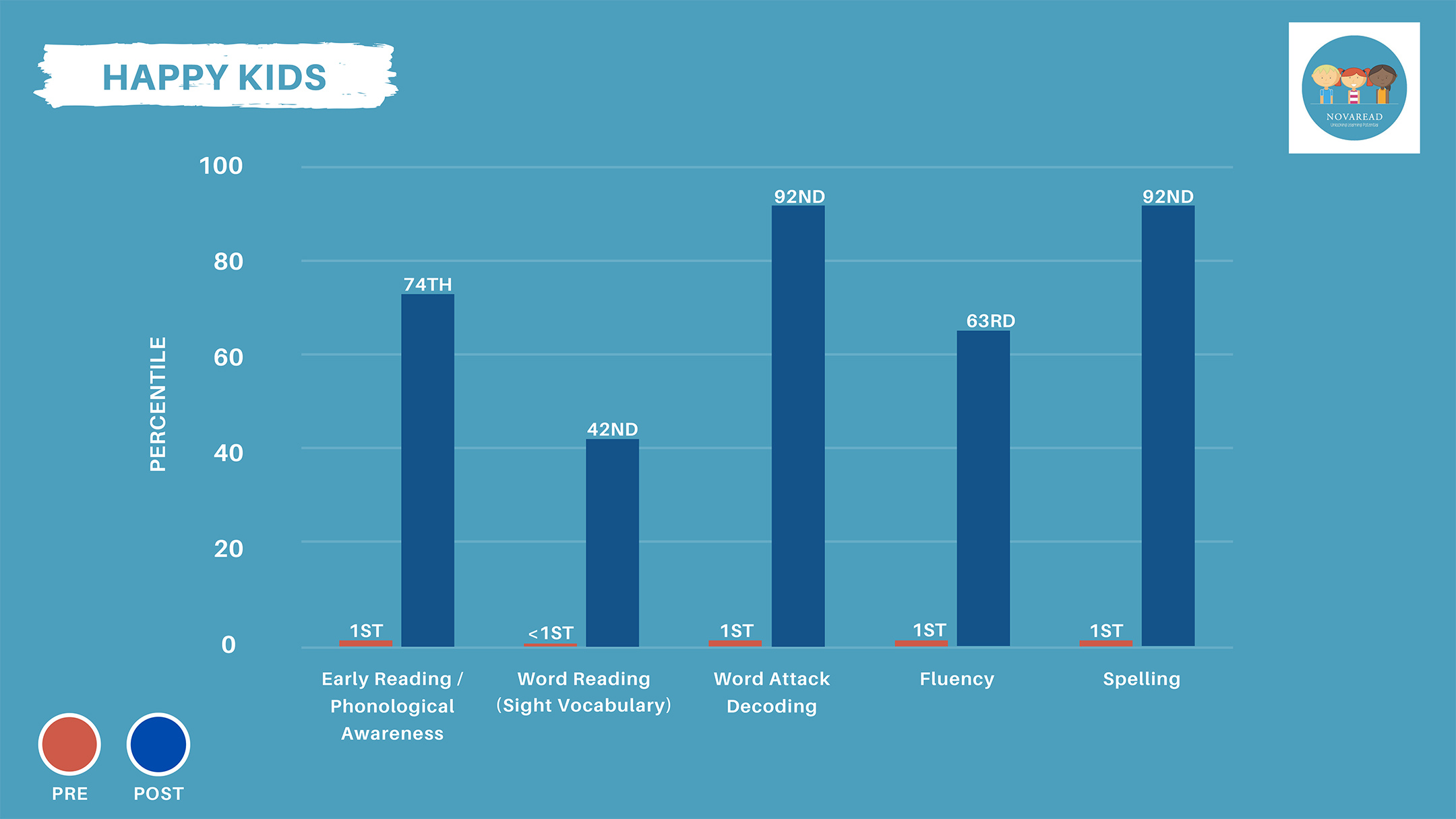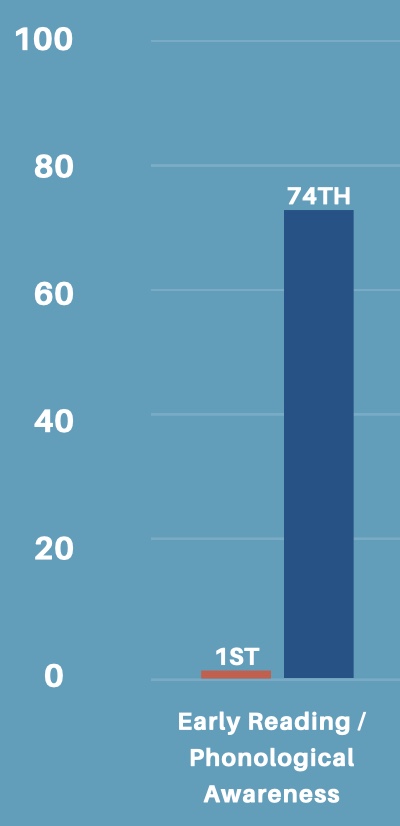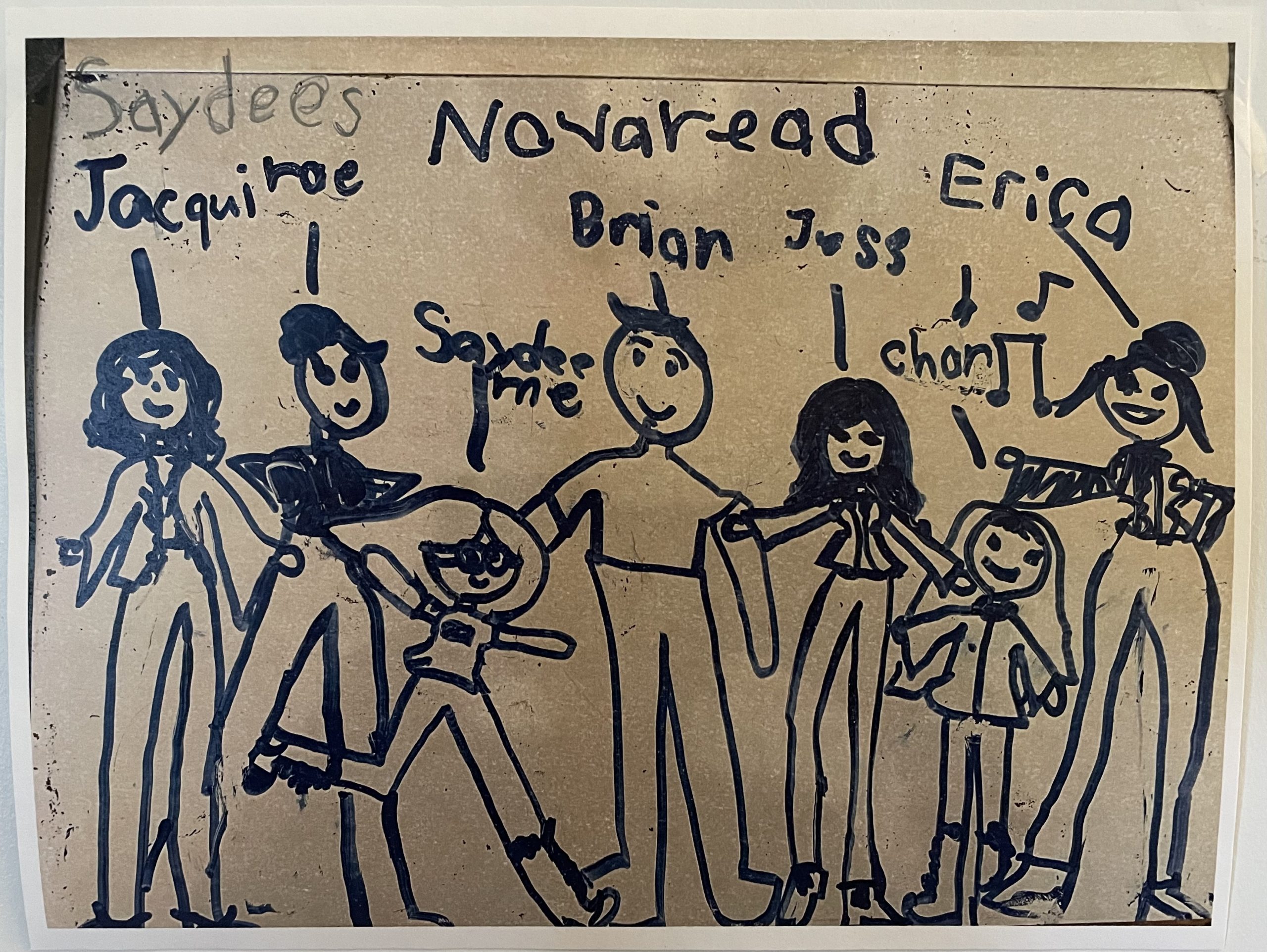Successful Student, Happy Child, Satisfied Family. Novaread, this is what we do!
May 7, 2022

Novaread works with families who are motivated to invest in their children’s education and overall health. We do this through the diagnosis and remediation of language based learning difficulties.

How these relationships often begin
The motivation we see from our families normally comes from seeing untapped potential in their child. On a daily basis that looks like a frustrated child who is struggling with the expectations of school while appearing to be more than intelligent enough to manage those expectations.
Hints of their potential are noticed when they interact well with other children their age or when they express interest in age appropriate topics.
They may also learn facts or retain information from conversation, TV or movies, yet for some reason they just can’t seem to develop the ability to read or write.
It’s possible that reading and writing is developing as expected but math is the area that is making life miserable for them. Maybe, much more often than we’d like to see, it’s both.
Since struggles like these will create frustration and those frustrations can spill over to home life, where parents see it and feel their own pain, we don’t just work with children, we work with families. The immediate work at Novaread is done with our students, however the choice is made as a family and over time the benefit is felt by the entire family.
This profile is going to look back at choices made by a family that had children who were struggling with school as a result of deficits in areas that are critical to being successful.

An incredible child and a star of a student
From feeling like the “dumbest kid in the class” to managing the stress of being the new standard bearer.
When we first met this little girl’s family she was in grade 3. The primary language spoken, actually the only language spoken, was English. In order to maximize opportunities in the future they made a very common choice to put her in French Immersion.
As her grade level increased and the expectations around reading and writing increased along with it, it became more clear that something wasn’t right. This is a common place for the parents of the children we work with to find themselves in. It is obvious to them something is wrong and unless this is your area of expertise you won’t know what is happening.
Initially they tried to find help with a top down approach to tutoring. When the results weren’t what they were hoping for, they took the proper step of seeking an assessment.
Assessment
In this family’s case they decided to have a Psychological-Educational (Psych-Ed) assessment administered. Psych-ed assessments are a great solution for several reasons. Primarily they are a comprehensive look at your child’s learning profile and they can be brought to the school so any suggestions on accommodations can be implemented. We also love Psych-Ed assessments because the families who choose to go that route, whether private or through the public system, are families who are looking for solutions to their children’s struggles. It’s a choice to take action and seek solutions. One we align with very well.
A Bit of Background
Before you read ahead to see the pre-program/intake scores, take a look at this post briefly explaining what skills are in use when someone is reading and writing. It will allow you to better understand what these scores mean and also provide a little insight into what you see happening with your own children.
Since all these test results are being presented as percentile scores, here is a quick explanation to help understand those.
Now that you have taken a look at either the post or the video on what is happening when we read and write, we can look at our student’s intake and exit test results.

Working with Children One on One
By choosing to structure our student-instructor ratios as one to one, we get the flexibility to choose methodology, start point of a program, control pacing and vary the materials for the child we are working with.
Where to Begin
Just because two children are struggling, doesn’t mean their struggles are due to the same reasons. It also doesn’t mean the extent of those struggles are the same.
We have children who come in from grade 4 and have absolutely no fundamental literacy ability. We also have children come in from grade 4 who have some fundamentals, both ability and knowledge, in literacy. Testing indicates these differences. Either the testing we do or the reports on testing done elsewhere that parents bring to us.
These are two completely different students and not just because of the test scores. Their age and gender may also play a role.
Student one may require a program that begins to build at the most fundamental level of literacy, Phonological Awareness. That program would move from Phonological Awareness, focusing on Phonemic Awareness as soon as possible, through to sound symbol/grapheme work, onto Decoding, all the while building the most relevant Sight Vocabulary possible, and then moving up to contextual reading and story writing. Student two may not require a start anywhere close to such a fundamental level.
When you look at the details of the testing in Early Reading and Phonological Awareness, the student being discussed here was clearly struggling due to a lack of development in her Phonemic Awareness. Life was made a little more difficult due to an expectation of learning a second language while being predisposed to struggle with languages to begin with. That said, she would have had a tough time with English literacy regardless of being in French Immersion.
The Good Stuff
On intake we also learned some of the most important information available regarding this little girl. She loves drawing and coloring, crafts, soccer, swimming (maybe loves swimming but not those early practice sessions ;). She has an incredible imagination and enjoys playing house with barbies.
 It may not seem like it, but information on what the kids we work with love to do and where they display strength, is almost as important as the information we derive from the testing. We work with them one on one. The reading we do, the game breaks we take and the activities we incorporate into session work can be, and most often are, modified to match what they love.
It may not seem like it, but information on what the kids we work with love to do and where they display strength, is almost as important as the information we derive from the testing. We work with them one on one. The reading we do, the game breaks we take and the activities we incorporate into session work can be, and most often are, modified to match what they love.
Individualized Programming
To build the skills we needed in order for her to flourish: Phonological Awareness, Phonemic Awareness, Sound Symbol Awareness, Decoding and Encoding ability, Sight Vocabulary for reading and spelling, proper reading rate and accuracy – and the resultant fluency, we started at a level where she could meet with success. At a level where she already had the skills needed to work successfully and independently, through our lesson plans.
This got us off on the right foot, where she immediately knew this wasn’t going to be a repeat of her being given work and failing.
From there, and this is a huge part of the work we do with our students, we moved through the steps needed to build everything outlined above at a pace dictated entirely by her. We saw where she is strong and successful and we could use those skills to help her make sense of what comes next.
Maybe she, or others, can segment at the syllable level so we use that to introduce the idea of segmenting at the phoneme (sound) level.
Incorporating methodologies from Ortin Gillingham, we build lesson plans that pull from the previous with just enough movement to ensure constant progress but not so much that our students walk into a new day and see a 20 percent success rate where they were once at 80.
This keeps engagement high and session energy very high. Some days we sailed through the work we had planned out. Some days we encounter a slower pace. Maybe we felt like today was going to look a certain way and on arrival it was clear this little one had a less than perfect day. This happens, and we can adjust. Her instructors were free to make changes in order to get the most from that day.
We can’t finish a child’s entire program in one day but we can definitely ruin the experience if we were to push too hard.
Getting the Student Invested in the Program
This student had spent the previous 3.5 years in school “having no idea what anything said or what anyone was saying”.
We want kids to know why they come to us. So in this specific case, we wanted to get her to a point where she could be given something she has never read before and read it. To ensure she would be successful we aligned the reading material with her program level, like we do with all of our students. We wrote it ‘for her’ and made the material accessible, yet challenging enough, through each stage of her growth.
As we do with all our literacy students, we presented her with materials that we knew she had the skills to manage. That isn’t to say the text is predictable for her, far from it. But it is tailored. Were we to pull random books from a shelf we would encounter an unpredictable level of complexity and a high level of error. This crushes session energy because the student meets with frustration.
Match expectation to skill level
Because we always knew where she was in her program, we knew the exact levels at which she could decode unfamiliar words. Because of how we built her sight vocabulary for reading, we also know exactly what sight words she has acquired and can use with relative ease.
When we placed text in front of her we knew if it was:
-text that would be considered a low level of difficulty for her, which would mean easier reading so a focus on fluency
-medium level text with a possible focus on building sight vocabulary recognition through its use in context
-text with a high level of difficulty, which would mean slow reading where we want to see her using strategies she may have recently learned.
If the reading is somewhat easy, we do more of it and when it is tougher we only do a few sentences.
The exact same process is used when we have students practicing their writing. You don’t practice the use of capitalization and punctuation if the sentence is composed of words that the student will find difficult to spell. When too much energy is going into what the words should look like, things like grammar will suffer.
Any student will have a finite amount of energy to apply to a task. If that energy is being used up in places it shouldn’t, you will see mistakes that don’t make sense.
Pacing
Intake testing gave us everything we needed to know about the start point and methodology required to give our student access to her innate ability, but how do we pace her program? This is extremely important. It is also, with the possible exception of the ability to vary methodology and program content, the single most important aspect of our approach.
It is also something you simply cannot do in a group setting. We build a plan on how we expect things to go yet things don’t always go as expected. That could be something negative, such as a higher than expected level of difficulty with the plan for the day, but it could also mean that we cover far more ground than expected for that day. Either one is fine.
When things slow down, which they do, so do we. We look at what was covered and if necessary we pull some of that day’s lesson into the next day or maybe we insert a .5 type of lesson plan. For example, they are in lesson 8 and moving into lesson 9 however they would benefit from additional work on a specific topic from the previous lesson so we add in a new lesson plan that focuses on that topic and then move on to lesson 9 the next day. Again, it’s impossible to react to situations like this in a group setting.
The other side of this is also possible. Using a recent math student as an example, we knew the necessary start point but were able to skip through four lesson plans very quickly. There is no need to stick to a specific amount of material just because that is all that is on the page in front of us. We want to move through the program as efficiently as possible.
And then there were two
One of the many interesting things about the student I have been referring to in this profile is that she is a twin. We are going to look more closely at her sister’s intake and exit scores when we profile her math results; however, this was a unique opportunity to witness the significance of one on one.
Before we met each of these amazing children we knew them only from the Psych-Ed reports that had been sent to us. The Psychologist mentioned that if there was ever a chance to try and work with two children at the same time, this might be it. We agreed given what we saw on paper.
 It looked like the program start point was close enough to be the same, methodology was going to be the same, so we gave it a try. Then you realize what should have been obvious in the first place. Kids aren’t just what’s in a report about them.
It looked like the program start point was close enough to be the same, methodology was going to be the same, so we gave it a try. Then you realize what should have been obvious in the first place. Kids aren’t just what’s in a report about them.
One of the twins had a stronger personality and that made it difficult for the other to feel comfortable when answering. Quite quickly we moved them into one on one settings and the benefits were obvious. Having had the opportunity to work with both through literacy and math programs we were able to see how varied programs can be despite how similar students can be.
Why flexibility across a program is critical
When we look back over program files and think back to conversations being had about their relative progress over the course of their time with us, you see they had unique struggles in different parts of the programs. Each was moving from point A to point B but their paths, were you to chart them, had very different looks.
Something else that was extremely interesting to see were their exit scores side by side. They were almost identical, kind of like the children themselves. So on intake and at exit they tested almost identically however the experience of them on a weekly basis was far from it.
Unlocking Learning Potential
At the beginning of this profile we wrote ‘From feeling like the dumbest kid in the class to managing the stress of being the new standard bearer.’ This wasn’t a quote however it is close. When we start the process of working with our families we gather certain pieces of information. The intake form had a quote, provided by our student’s mother, but from the little girl herself. “I feel like the dumbest kid in the whole class.”
When we finished her program I asked her mom what she, the little girl, felt her days were like now. Mom mentioned that the new struggle, for lack of a better word, was that the little girl was in a competition with another student in the class to see which of them would get the highest score in the most recent test. To hear comments like this has always been and continues to be about the greatest form of reward we could ever hope for out of the work we do.
Novaread
We work with families who are motivated to invest in their children’s education and overall health. We do this through the diagnosis and remediation of language based learning difficulties. The sole purpose is to unlock the potential that resides within these children. To give them the ability to meet with whatever level of success they would meet with had they not been hindered in the first place.